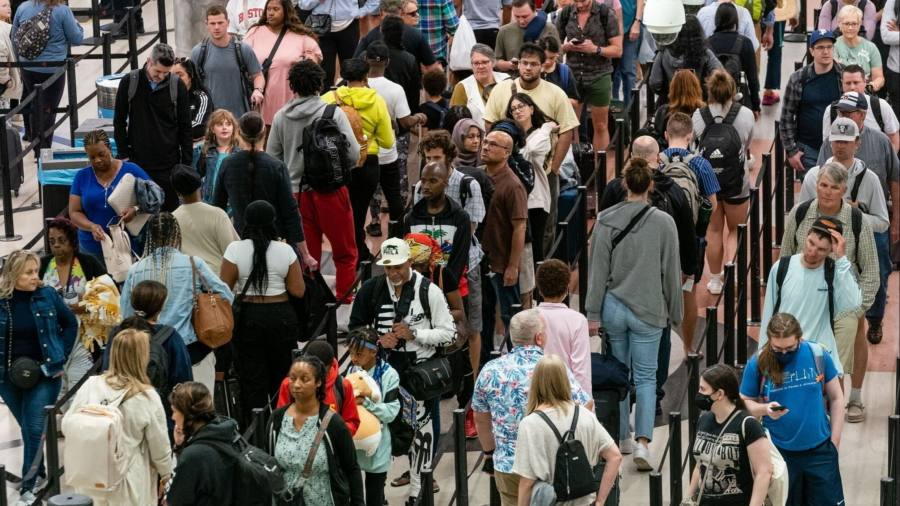For US airlines, summer is the Super Bowl of travel seasons. As the Memorial day holiday weekend gets under way, all signs suggest this could be a record season for air travel.
The number of passengers moving through airport checkpoints surpassed 2.65mn on Thursday, the most in a single day since November 2019. Industry group Airlines for America reckons 256.8mn people will fly between June-August — a new high. Meanwhile, pricing for air fares remains high.
This should be good news for America’s biggest airlines. Yet shares in Delta, American, United and Southwest are down between 5-13 per cent over the past three months, compared with a 4 per cent gain for the S&P 500. Aside from United, the losses are even steeper over a 12-month period. Valuations remain low, with the four airlines trading between four to nine times forward earnings. The average for the S&P 500 is about 18 times. Short interest in the sector is at a one-year high, according to TD Cowen.
More passengers does not automatically mean more profits. While jet fuel prices are about a third lower compared with a year ago, labour costs have gone up. Moody’s expects airline labour costs to increase 19 per cent this year and another 8 per cent in 2024. Carriers rebuilding staffing levels following the coronavirus pandemic are agreeing significant pay rises in contract negotiations. These are fixed costs that will not go down for several years. At Delta, for example, profits are forecast by Wall Street to more than double to $3.5bn this year. But that would still be below the $4.7bn it made in 2019.
Hefty interest expenses are also keeping a lid on earnings. Airlines issued substantial debt during the pandemic and the industry is highly leveraged. US mainline and regional airlines spent $9.2bn on interest expense and aircraft rentals last year, according to TD Cowen, compared with $5.9bn in 2019. This, along with recession fears, will keep airlines’ shares grounded.
Read the full article here



